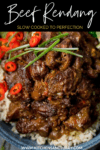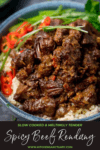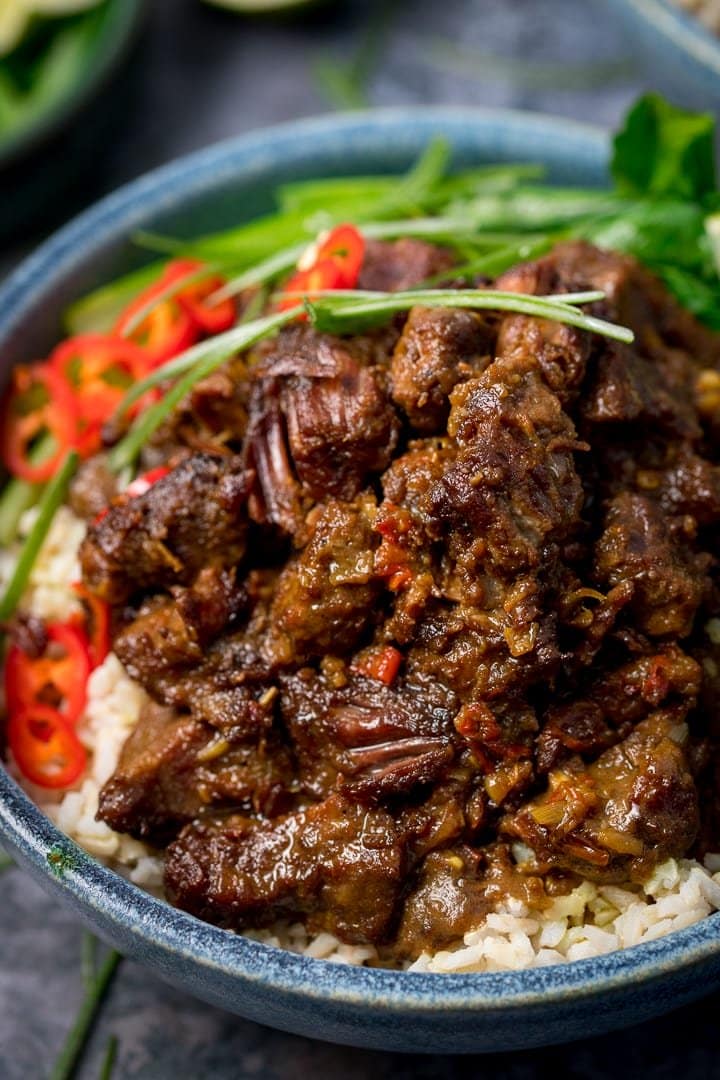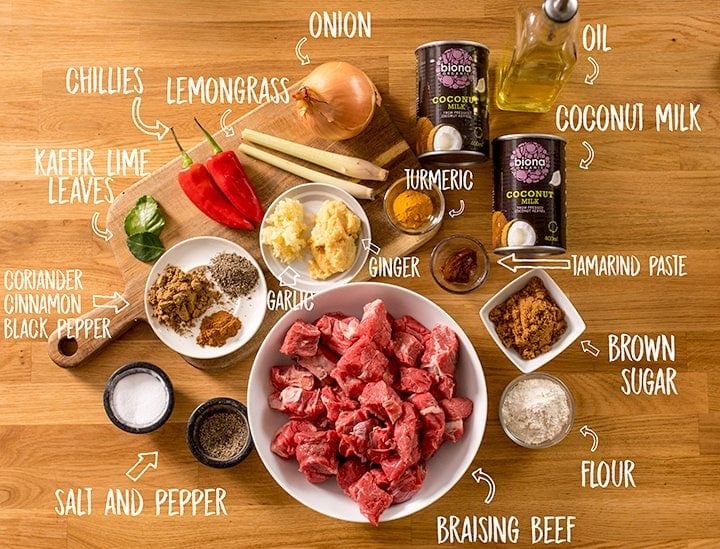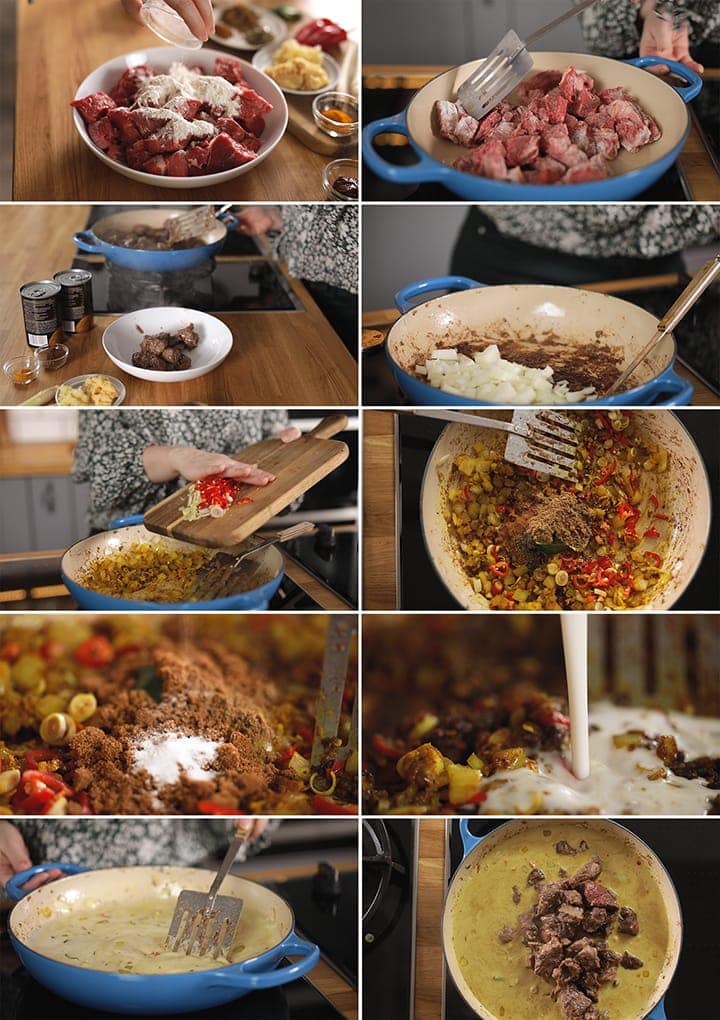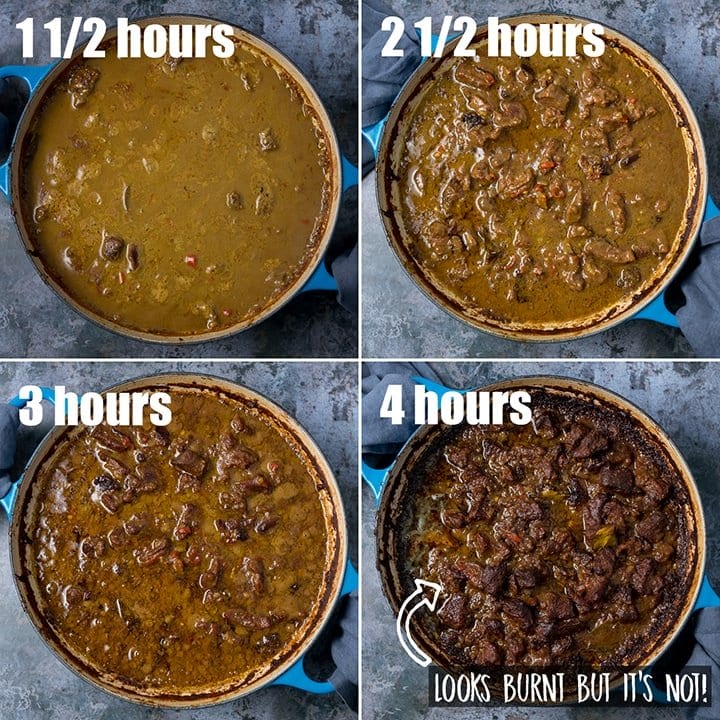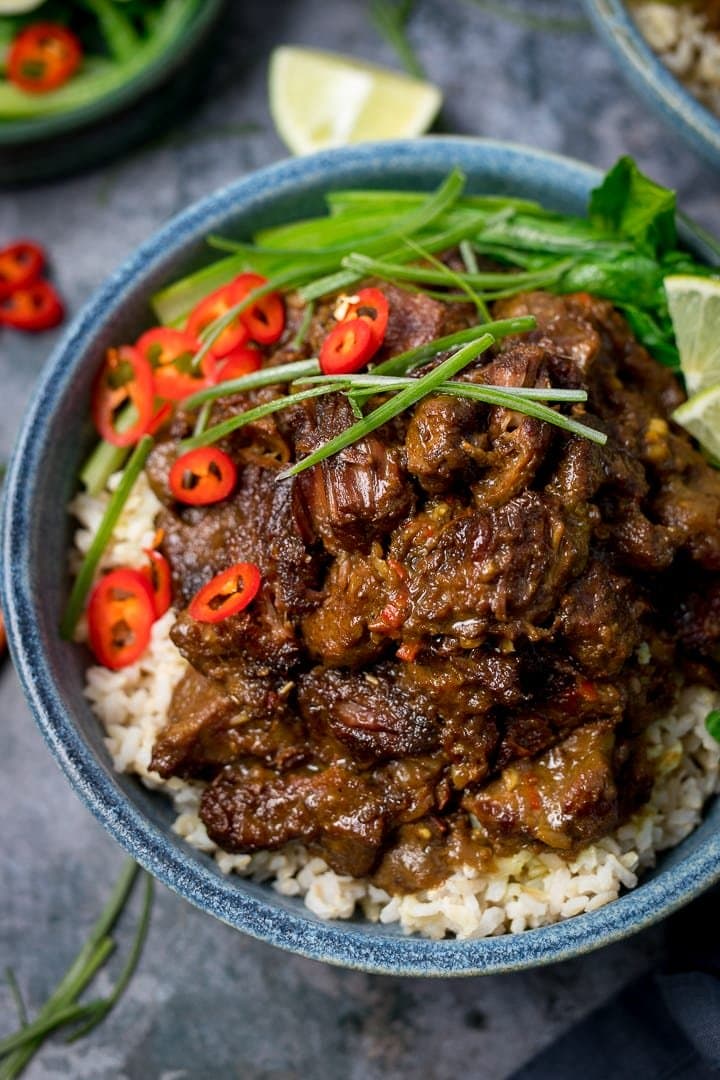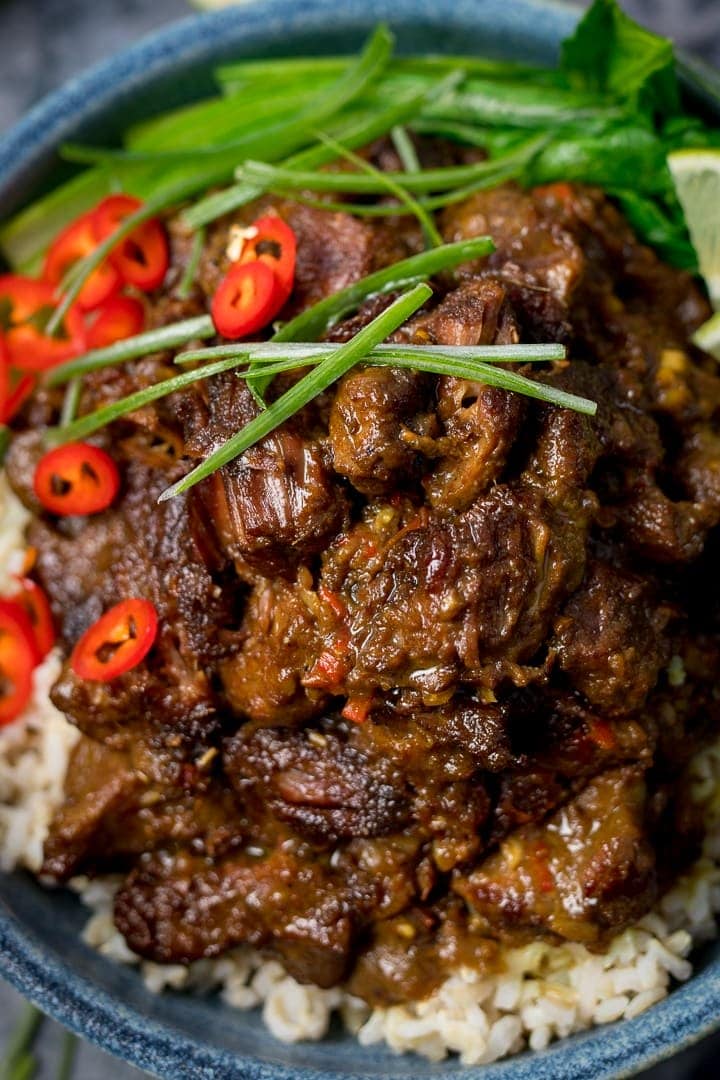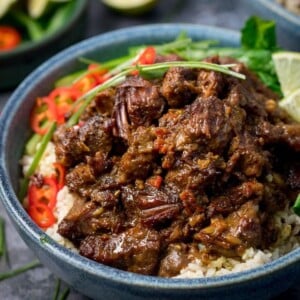This is a slow-cooked dish, that requires the occasional bit of attention during its 4 hours in the oven. It’s one that’s worth saving for the weekend to ensure a result that is totally worth the wait.
What is Rendang?
Rendang originates from Indonesia, and is now a popular dish all over the world, due to it’s amazing and complex flavours. There are many different recipes out there, but most (including me!) agree that it’s a slow-cooked dry curry, made with coconut milk, spices and sugar. The uniqueness of rendang, compared to any other slow-cooked beef curry, is that during the cooking process, the coconut milk reduces, and the oil separates from the coconut milk. This means that the beef is initially slow-cooked to tenderness in that creamy-spicy sauce, and then as the oil separates, it fries the beef, giving it a beautiful, caramelized exterior.
What do we need to make it?
Best cut of beef to use:
Chuck steak (also known as braising steak) – comes from the forequarter of the cow. This consists of parts of the neck, shoulder blade, and upper arm. It’s a tough but very flavorful cut of meat that needs long slow cooking. This makes it perfect for beef rendang. Cut the beef into large (3cm-4cm) chunks.
How do we make it?
Dust chunks of beef with flour, salt and pepper, then seal the beef in hot oil in a large cast-iron casserole pan. Transfer the beef to a bowl.Soften a chopped onion in the same pan with a little oil (scrape up any crispy bits as you go), then add garlic, ginger and turmeric, lemongrass, chillies, tamarind paste, ground coriander, pepper, cinnamon, lime leaves, sugar and salt.After cooking for a minute or so, add in coconut milk. Stir and bring to the boil, then add the beef back in.Place a lid on the pan and place in the oven at 150C/300F for 90 minutes.After 90 minutes, stir, then continue to cook in the oven, uncovered for another 2-2.5 hours, stirring very gently every half an hour.
When you put the rendang in the oven, you’ll wonder how it’s going to end up being a dry-ish curry. The recipe starts off with a lot of liquid from the coconut milk. However, during the cooking process, that coconut milk reduces right down. After about 3 hours, the oil separates from the rest of the sauce (you’ll be amazed at how much of it there actually is).As you take it out of the oven for an occasional stir, you’ll probably wonder if it’s all going to go horribly wrong. Trust me, it’s supposed to look like that. Here’s how mine looks during the cooking process: As more and more oil separates, and the rest of the sauce starts to disappear, that remaining oil will actually be crisping and frying the meat. So you’ll be left with very dark, caramelized meat that has been infused with bags of flavour. Pro Tip: It’s very important to keep a close eye on things during the last 30 mins or so – to ensure the meat doesn’t stick to the pan or burn. And don’t worry, any remaining oil can be poured off and discarded.
Like your rendang a little saucier?
Simply reduce the cooking time by 30-60 minutes, and be sure to drain that excess oil off.
The Video
More Asian Recipes:
Love this type of cuisine? Here are some more Indonesian, Malaysian or Singapore-style recipes:
Mee Goreng with chicken (spicy yellow noodles)Mee Siam with prawns (vermicelli noodle dish)Vegetarian Kway Teow (fried flat noodles)Seafood Laksa (spicy slurpy vermicelli noodle soup)Chicken Satay with easy satay sauce. Oh and there’s my Beef Satay Skewers too.Beef Massaman Curry Recipe
If you’ve tried my Beef Rendang recipe then please rate the recipe and let me know how you got on in the comments below, I love hearing your thoughts and add-ons to my recipes! You can also follow me on INSTAGRAM, FACEBOOK, PINTEREST, and TWITTER to see what I’m up to in the kitchen, what recipes I’m loving, and of course, YOUTUBE to see our latest recipe videos! This recipe was first posted in 2014, then updated in January 2018 and again in June 2020. Updates were for new photos, tips, and recipe video (no updates to the recipe, just added a couple of ingredient swap options). Some of the links in this post may be affiliate links – which means if you buy the product I get a small commission (at no extra cost to you). If you do buy, then thank you! That’s what helps us to keep Kitchen Sanctuary running. The nutritional information provided is approximate and can vary depending on several factors. For more information please see our Terms & Conditions.
